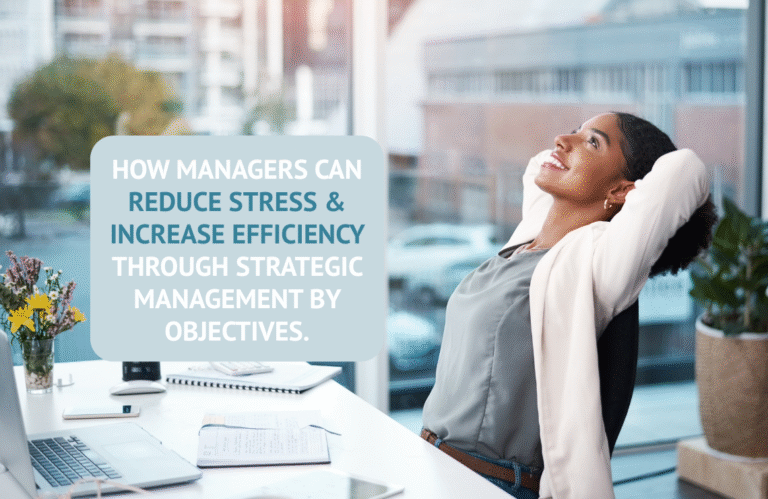Introduction
Do you feel that acute problems characterize everyday life, endless meetings and ad hoc solutions? Then you’re not alone.
Many companies get stuck in a constant stream of operational tasks, where the urgency of the day always takes precedence over long-term planning. Business leaders and managers who focus solely on putting out fires risk losing control of strategic goals – something that in the long run can inhibit both growth and competitiveness.
But there is a way out
By understanding the problem, the consequences and applying concrete solutions, companies can create an effective work structure where both operational and strategic tasks can be accommodated. This article will help you identify common pitfalls and provide practical tools for better time management.
When leaders demonstrate high competence in time management and prioritization, they become good role models for all employees – especially their teams and employees. The consequences of this result in a well-balanced organization that is not only more productive – it also creates a work environment where people thrive and develop.
Let’s take the step towards a more sustainable and successful way of working through strategic time management!
This article contains the following:
- The operational trap – why do companies get stuck there?
- Consequences of imbalance – Stress, inefficiency and lack of results
- How managers can reduce stress and increase efficiency through strategic management by objectives
- 5 Practical ways for strategies time management – How to reduce operational working methods and create the right priorities
- Practical tools and techniques – How companies create strategic time management
- Looking ahead – Working life 2030 and beyond
- Wrapping Up – Take Control of Your Time Today and create strategic Time Management

1 The operational trap – why do companies get stuck there?
Many companies find themselves in a constant stream of operational tasks, where today’s urgent needs always take over. Emails have to be answered, meetings follow one another, and ad hoc tasks appear without warning. This way of working is called ad hoc. It creates a work situation where reactive action replaces long-term planning, and where multitasking and constant interruptions lead to reduced focus and productivity.
When ad hoc work takes over, you lose both planning and focus—but still think you’re productive. Ulla Lilliehöök
Modern work environments are characterized by digital communication and fast information flows. Employees are constantly connected and often in a “standby mode,” where they are constantly responding to messages, switching between programs, and participating in spontaneous meetings.
While doing many things at the same time can feel efficient, research shows that multitasking can make us 25% less productive – while making the brain more tired and negatively impacting decision-making.
When companies lack clear goals and structured workflows, the workday often becomes reactive and ad hoc-driven. This leads to a number of negative consequences
Eight disadvantages of working mostly ad hoc:
- Urgent issues control the working day – the most important tasks are delayed or forgotten.
- The employees’ performance level is lower than their actual capacity, which affects profitability.
- Recurring problems are constantly dealt with urgently – the root cause is never investigated.
- Improvement and development are prioritized away, which reduces efficiency and quality.
- Skills development is missing, which inhibits the company’s potential for success.
- Stress levels increase and the risk of sick leave increases.
- The work environment deteriorates, which means that talents seek to leave.
- Working hours are becoming long, efficiency is declining, and sick leave is increasing.
When companies get stuck in this pattern, it becomes difficult to create sustainable success. Therefore, taking control of the workflow and finding strategies that balance operational and strategic goals through strategic time management – is something that we will cover in the next sections.

2 - Consequences of imbalance – Stress, inefficiency, and lack of results
When operational tasks dominate work, the consequences become clear: increased stress, reduced efficiency and poorer results. As a result, time pressure is created where unclear goals rule, which leads to employees getting stuck in a reactive spiral, where only the most urgent tasks get attention. In the long term, this becomes unsustainable – both for the individual and the company.
Stress in working life – a growing challenge
Over the past 25 years, sick leave linked to stress and mental illness has increased significantly. In 2022, over 70,000 people in Sweden were on sick leave due to stress-related mental illness, and the trend is global.
Gallup’s report “State of the Global Workplace 2022” identified five factors that often lead to burnout:
- Feeling of unfair treatment
- Too high a workload
- Unclear communication from managers
- Lack of support and support
- Unreasonable time pressure
When time pressure increases, stress becomes part of everyday life, and many people get stuck in a stress bubble that means that we only see what is urgent.
As a result, employees only have time to handle emails/chats, attend meetings and deal with urgent problems. The stress means that there are neither thoughts nor reflections on how to work smarter to be more productive and reduce stress.

What is stress – and how does it affect us?
Stress occurs when we feel that we lack the time, resources or skills to handle the demands placed on us. It is a physiological and psychological reaction, in which the body goes into a survival mode.
When stressed, cortisol, a hormone that increases the heart rate and activates the emotional center in the brain – causing us to act quickly and instinctively, but at the same time losing our ability to plan, solve problems and think logically.
Stress is a natural part of life, but when it goes on for a long time without recovery, it becomes harmful. The consequences of this are poorer decisions, more mistakes, and reduced creativity, which can affect both the individual’s well-being and the company’s profitability.
Breaking the negative spiral requires awareness and concrete changes. Consequently, it is important to understand the mechanisms of stress and identify risk factors, companies can create work environments where balance and long-term thinking replace constant reactivity.
How do we break out of the stress bubble?
Getting stuck in an event-driven way of working is both energy-consuming and long-term harmful. But it is possible to take control of the working day and create a better balance between operational and strategic tasks.
By understanding what creates stress, identifying effective methods for strategic time management, and putting in place structures that steer work away from ad hoc, companies can build a more sustainable and productive work environment.
In the next section, we’ll go over concrete solutions and strategies that will help you move away from reactive work – and instead focus on long-term success that leads to strategic time management.

3 – How managers can reduce stress and increase strategic time management through management by objectives
Creating a balance between operational and strategic tasks is critical to a company’s long-term success. As a manager, you have a central role in creating the conditions for employees to work efficiently, prioritize correctly and avoid getting stuck in ad hoc work.
To succeed with strategic time management, in addition to clear goals, structure and regular follow-up, the right leadership is required. This means leadership where employees are involved in the goals related to their work roles, receive encouragement and support in learning to be more structured every day and how they can develop in the long term.
Setting goals is the first step to turning the invisible into the visible.” – Tony Robbins
Effective management by objectives – The basis for balance
One of the biggest challenges for companies is maximizing existing capacity and ensuring that employees perform at their highest level. Without clear goals and structured planning, many end up in a reactive way of working, where the most important tasks are constantly postponed.

As a manager, it is crucial to:
- Create clear goals that link employee work to company strategy.
- Involve employees in the goal process of the parts that relate to their work (current situation analysis, goal development, action plans)
- Implement a structured follow-up, so that employees know what is prioritized.
- Support employees in learning Time Management, so they can work more focused.
The further away from management an employee is, the more important it is that the goals are concretized for them. Without clarity, work becomes random and inefficient.
The role of leadership – How to inspire employees to better balance
Building a sustainable work structure is one of the most important tasks of a supervisor. Coaching leadership helps employees break out of inefficient work patterns and take control of their time.
By combining goals with coaching, you create an environment where employee development directly contributes to increased performance and shared success.
Here are three keys to leading away from the ad hoc approach:
- Communicate clear priorities – Employees need to understand what is most important to focus on each day.
- Encourage reflection – Help employees analyze their work patterns and identify what can be improved.
- Create a culture where recovery is natural – Long-term stress is harmful to both the individual and the company. As a manager, you can be a role model for how balance is created.
When managers actively work with management by objectives, structure and coaching leadership, a work environment is created where both productivity and well-being increase. Thus, the first step is to understand the problem – implementing concrete tools and methods is next.
See more:
Leadership that promotes learning and change,
From micromanagement to macrolearning!
In the next section, we’ll go through practical tips to help you create better workflows, set the right priorities, and streamline your own and your employees’ workday.

4 - Five practical ways for strategic time management – How to reduce operational work and create the right priorities
In times of change, employee participation is not only important – it is crucial for success. Managers play a key role in anchoring ideas and developing new practices together with their teams. By involving employees right from the start, a foundation of insight, understanding and commitment is created, which means that the change process is both sustainable and effective over time.
Presenting ready-made solutions, on the other hand, can involve a risk. When employees are not allowed to be involved and influence, they often lose motivation and understanding of the changes that need to be implemented.
Instead, managers, together with their team, should create a common picture of the current situation. When everyone shares the same understanding, it becomes easier to identify relevant goals and clarify the division of responsibilities.
Managers can then develop action plans that are discussed with the manager if necessary – a method that provides several advantages:
- Strengthens accountability
Employees feel greater ownership of both processes and results. - Generates better solutions
Multiple perspectives lead to more innovative and sustainable decisions. - Increases motivation
Participation creates commitment and facilitates the implementation of change. - Make employees more self-motivated
Increased understanding of purpose makes them take more initiative. - Leads to change with real impact
When the whole team is behind the goals, change becomes more effective.
For companies to be able to work long-term and focused, it is important that strategic priorities are not overshadowed by short-term ad hoc tasks. Therefore, smart strategies are needed to help employees lift their gaze and work more strategically
The five practical paths of strategic time management are: Create a productive start to the workday, introduce recovery and effective breaks, facilitate work on complex tasks, strengthen management by objectives and avoid reactive work, and create a work culture that promotes focus and productivity
1. Create a productive start to the workday
How employees start their workday affects the entire workflow. A structure for morning routines reduces the risk of getting stuck in reactive work.
As a manager, you can:
- Implement daily morning meetings where the team reviews priorities.
- Encourage employees to start their day with the most important tasks, instead of drowning in emails.
- Create policies for email management, chat, and more, so that these types of tasks don’t become the first and biggest focus of the day.
2. Introduce recovery and effective breaks
Many organizations have a culture where long hours are seen as productive, despite research showing that regular breaks increase efficiency.
As a company, you can:
- Develop clear guidelines around break routines to prevent burnout.
- Encourage focused shifts, where employees work intensively in intervals and take recovery in between.
- Create a work environment where lunch breaks without work talk become the norm, so that employees really recharge.
See more: Regular breaks make you more productive
3. Facilitate work with complex tasks
Many important tasks are postponed because they feel too big and difficult. By breaking them down into manageable parts, they become more feasible.
As a manager, you can:
- Help employees break down complex projects into smaller steps.
- Introduce a structure for project planning, so that long-term tasks are booked in the calendar.
- Create a culture where big tasks are seen as a series of small achievements, instead of as an overwhelming deadline.
4. Strengthen management by objectives and avoid reactive work
When the company has unclear goals, the work becomes random. Then it is easy to get stuck in operational tasks and miss the strategic goals.
As a manager, you can:
- Communicate clear goals that make it easy for employees to prioritize correctly.
- Introduce tools for follow-up, so that everyone knows what is most important to focus on.
- Ensure that daily tasks are linked to the strategy, instead of being governed by urgent needs.
5. Create a work culture that promotes focus and productivity
Reducing operational practices requires a corporate culture where focus and long-term planning are highly valued.
As an organization, you can:
- Encourage time blocking, where employees get uninterrupted time to focus on important tasks. Create a work environment where distraction-free time is respected, reducing multitasking.
- Promote a strategic and long-term work structure, where improvement and development are prioritised.
What concrete tools are there to succeed?
Understanding how to create the right structure and work culture is an important part of the solution. But what concrete tools and methods can companies use to make these strategies part of everyday life?
In the next section, we’ll go over practical tools and techniques that help companies implement better work practices and strengthen strategic work.
Do you want more practical tips?
See the blog: Common time traps at work – and easy ways to avoid them!

5 – Six Practical Tools and Techniques – How Companies Create Strategic Time Management
Understanding the importance of balance between operational and strategic tasks is a first step. But to create lasting change, concrete methods and tools are needed that make it easier to prioritize correctly and work more efficiently.
At the same time, companies must also invest in a sustainable work culture where employee health and recovery are at the center – this is a long-term investment in both job satisfaction and success.
Here are some key tools and techniques that help businesses break operational patterns and prioritize strategic time management.
1. Management by objectives with OKRs – A clear direction for everyone
Objectives and Key Results (OKR) management is a powerful method to ensure that the company’s long-term goals permeate the entire organization.
- Objectives – Define clear and inspiring goals that connect to the company’s strategic direction.
- Key Results – Measurable results that clearly show how the goals are achieved, providing structure and clarity in the work.
- Regular follow-up – Ensure that each department and individual follows and adjusts their efforts based on set OKRs.
When OKRs are used, focus, commitment and responsibility are created, while operational tasks are linked to the overall goals.
2. Time Blocking – Structure for Focus Work
Multitasking and constant interruptions are one of the biggest causes of inefficiency. Time blocking is a method in which the workday is divided into clear time zones for specific tasks.
- Introduce fixed time blocks for strategic work, where employees can work undisturbed.
- Plan daily work windows, where email, meetings, and ad-hoc issues are handled in a structured way.
- Encourage employees to respect colleagues’ focus periods and reduce spontaneous interruptions.
Time blocking helps companies create a work culture where deep focus and planned structure replace constant reactivity.
3. Automation of repetitive tasks
Operational work can easily become time-consuming, especially when it involves repetitive administrative processes. When companies automate, they free up time for more strategic work
- Automate email management —Standardize responses, use AI-powered tools, and create rules for filtering.
- Use project management tools – Platforms like Asana, Trello, or Monday helpteams structure workflows.
Streamline reporting – Digital systems can automatically generate data and reduce the time spent on manual compilation.
With the right automation, companies can save valuable time, reduce operational burden, and create space for more innovative and strategic work.
4. Strategic meeting routines – From inefficient to value-creating
Many organizations get stuck in the meeting spiral, where the working day becomes filled with meetings without clear purposes. Optimize the meeting structure with these techniques:
- Introduce meeting-free days — Create space for deep thought and focused work by blocking certain days from meetings.
- Use standing meeting agenda — Every meeting should have a clear agenda and include only the people who need to attend.
- Set requirements for meeting efficiency – Shorter meeting times, clear decisions and clear actions after each meeting.
Smaller, better-structured meetings reduce operational burden and increase productivity in the organization.
See more: How to Create Engaging and Effective Meetings!
5. Smart follow-up – Ensure long-term change
Introducing new tools and methods is not enough – long-term changes require structured follow-up.
- Create metrics that show how efficiency is impacted over time.
- Regularly evaluate the balance between operational and strategic tasks.
- Provide continuous feedback and support to employees so that the change work is sustainable. An integrated follow-up process.
When follow-up is integrated into the culture, it is ensured that the company continues to develop and does not fall back into old ways of working. Consequently, it contributes to a culture of learning and development over time.
6. Sustainable working methods – Balance between efficiency and employee well-being
To achieve long-term success, creating a sustainable work environment is just as important as optimizing workflows.
- Encourage flexibibility in working hours, workspaces, and regular breaks to avoid burnout.
- Create a work culture where continuous development, recovery, and personal growth are prioritized.
- Introduce routines that ensure a manageable workload, so that there is room for both performance and long-term well-being. By combining efficiency with a sustainable work culture, the company invests in its most valuable resource – its people.
Implementing the right tools and techniques gives companies the tools to create structured and strategic development. But what changes and trends will affect working life in the future?
In the next part, we explore the future of working methods and innovations – and how companies can adapt for long-term success.

6 - Looking ahead – Working life 2030 and beyond
The world of work is changing rapidly, and strategic time management is becoming a critical factor for long-term success. The companies of the future will leave multitasking and constant availability behind and instead create structured workflows where the balance between operational and strategic tasks is obvious.
At the same time, sustainable working methods, the right leadership and employee well-being will be central to driving both productivity and profitability.
Three major shifts that shape working life going forward:
1 – AI-powered time analysis and work structure
Companies will use AI to identify inefficient work patterns and create individualized recommendations for better work structure. Data-driven insights make it possible to optimize workflows and ensure a balance between efficiency and long-term sustainability.
2 – Hybrid working and digital transparency
Flexible working models continue to evolve, which places higher demands on clear communication, management by objectives and structured collaboration. Effective leadership is crucial for creating engagement, strengthening company culture, and ensuring that employees feel included and motivated.
3 – Mental sustainability and energy management
Organizations that prioritize sustainable working life and strategic energy optimization will retain and develop the most competent employees.
- The right leadership creates the right conditions – A work environment where employees feel valued and have the opportunity to develop leads to higher motivation, better performance and long-term success.
- Structure and recovery go hand in hand – Balanced workload and strategic breaks strengthen both productivity and employee energy over time.
In the future, working life is not only about working more efficiently, but also more sustainably. Thus, the companies that already today create a culture where productivity and profitability go hand in hand with well-being and long-term development will be the ones that lead the way forward.
7 – Wrapping Up – Take Control of Your Time Today and Create Strategic Time Management
Getting stuck in operational tasks and constant interruptions is a challenge for many companies. But by implementing strategic time management, management by objectives, effective tools and structured ways of working, organizations can create balance, increased productivity and better well-being.
The future belongs to those companies that understand the importance of time management and structured work management. When goals and methods become clear, stress is reduced and efficiency increases – both at the individual level and within the entire organization.
So the question is:
How does your company see the future of work?
It’s high time to create strategic time management for long-term success.


